The stock market valuation chart we want now but can't have until 2035 🔮
Plus a charted review of the macro crosscurrents 🔀
📈The stock market rallied to all-time highs, with the S&P 500 setting an intraday high of 6,699.52 on Tuesday and a closing high of 6,693.75 on Monday. The index is now up 12.8% year-to-date. For more on the market, read: The stock market and the economy are diverging 📊
-
Many popular valuation metrics suggest that the stock market is expensive, implying that investors should expect weak returns over the years to come.
Unfortunately, all valuation metrics are far from perfect, and their signals can lead you astray.
Let’s quickly review three popular valuation ratios:
Forward price-to-earnings (P/E): At about 22x, this ratio is above its historical averages. Investors like this metric because it’s based on earnings expected over the next 12 months or next calendar year, and the theoretical value of a stock is closely tied to a company’s future earnings. Unfortunately, most of a company’s value is derived from the earnings generated in the many years beyond the next year. So, the one-year forward P/E lacks scope.
Trailing P/E: At about 28x, this ratio is significantly above its historical averages. It’s calculated using earnings from the past 12 months or the past calendar year. Its strength comes from the fact that these are realized earnings, not guesses. But the obvious disadvantage is that it’s backward-looking, while the stock market is forward-looking.
Cyclically-adjusted P/E (CAPE): At 40x, CAPE is at its highest level since the dot-com bubble. This ratio is a form of trailing P/E, but the E is an average of the past 10 years’ earnings. Popularized by Nobel Prize winner Robert Shiller, CAPE’s strength comes from smoothing out short-term noise, as earnings can be volatile from one year to the next. But again, the major disadvantage is that it’s backward-looking.
Ideally, your valuation model would consider many years’ worth of future earnings (which, by the way, is how discounted cash flow models work.) Obviously, that’s not easy to do. It’s hard enough to predict next quarter’s earnings.
Behold: The forward-realized CAPE 🦸🏻♂️
But what if there were a P/E ratio where the E was based on the next 10 years’ earnings? It would be a ratio that combines the strengths of the forward P/E and CAPE.
This sparked a thought exercise on X last week.
While we can’t accurately predict earnings through 2035, we have the ability to go back in time to 2015 and beyond to calculate what this “forward-realized CAPE” would’ve been based on actual earnings reported.
In other words, up to 2015, we can calculate a valuation ratio using the average of the next 10 years’ realized earnings to understand whether the market was actually cheap or expensive at the time.
Credit to Jake (@EconomPic on X) for already having thought of this a year ago.
In the chart below, you have Shiller’s CAPE in red and the CAPE based on forward-realized 10-year earnings in blue.
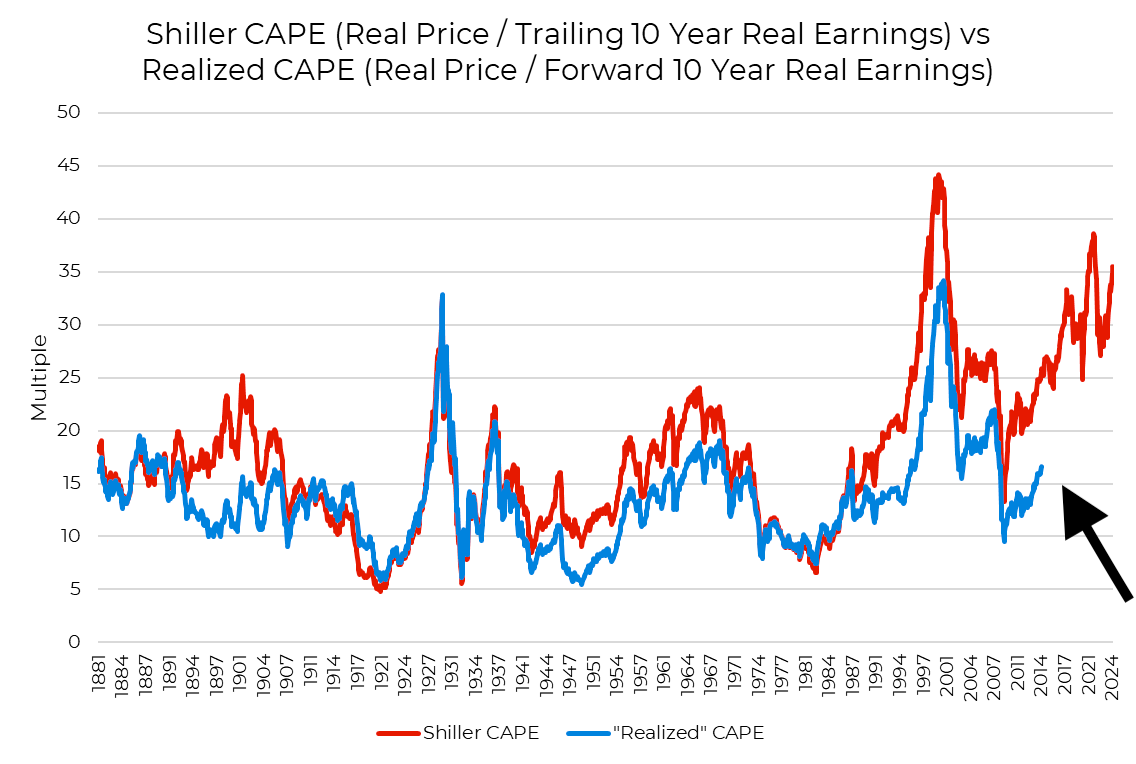
In mid-2014, Shiller’s CAPE was at about 26x, significantly above its long-term average of about 17x. By this metric, the market looked expensive, which meant investors should’ve expected weak, low-single-digit returns.
But the realized CAPE at the time was about 17x. Eyeballing it, this metric was roughly in line with its long-term average and below its average from the prior 20 years.
The realized CAPE was telling us the market was not expensive in 2014. Why? Because earnings growth proved healthy in the years that followed.
“Important re-framing,” Bloomberg’s Joe Weisenthal said about the chart. “People like to blame the Fed or ETF flows for the big bull market. But the fact of the matter is that the realized earnings of big American companies have been extraordinary both on an absolute basis and also on a relative (to estimates) one for years.“
The metric we want, but we can’t have 👀
So, where is the forward realized CAPE today?
Unfortunately, we won’t know until 2035.
That’s the nature of investing — you are betting on an uncertain future.
Sure, the forward 12-month P/E, the trailing P/E, and the Shiller CAPE might all suggest the stock market is expensive. AND all of these metrics are much higher today than they were 10 years ago.
But maybe the market is being bolstered by bullish investors convinced the next 10 years of earnings growth will be robust, effectively wagering that in 2035, we’ll learn that the blue line in Jake’s chart is attractive when it gets to 2025.
Will those investors be proven right?
I’ll be sure to write a follow-up piece then.
-
Related from TKer:
That time people freaked out about the CAPE ratio 10 years ago 😱
17 charts to consider as stocks rally and the economy cools 📉📊📈
Watch and Listen! 📺🎧
I was on the RenMac Off-Script podcast with Jeffrey deGraaf, Neil Dutta, Stephen Pavlick, and Steve Duttenhofer. We talked about the Fed, markets, global investing, the risk of a government shutdown, and much more! Check it out on Apple Podcasts, Spotify, or YouTube!
Review of the macro crosscurrents 🔀
There were several notable data points and macroeconomic developments since our last review:
🎈 Inflation heats up. The personal consumption expenditures (PCE) price index in August was up 2.7% from a year ago. The core PCE price index — the Federal Reserve’s preferred measure of inflation — was up 2.9% during the month. While it’s above the Fed’s 2% target, it remains near its lowest level since March 2021.
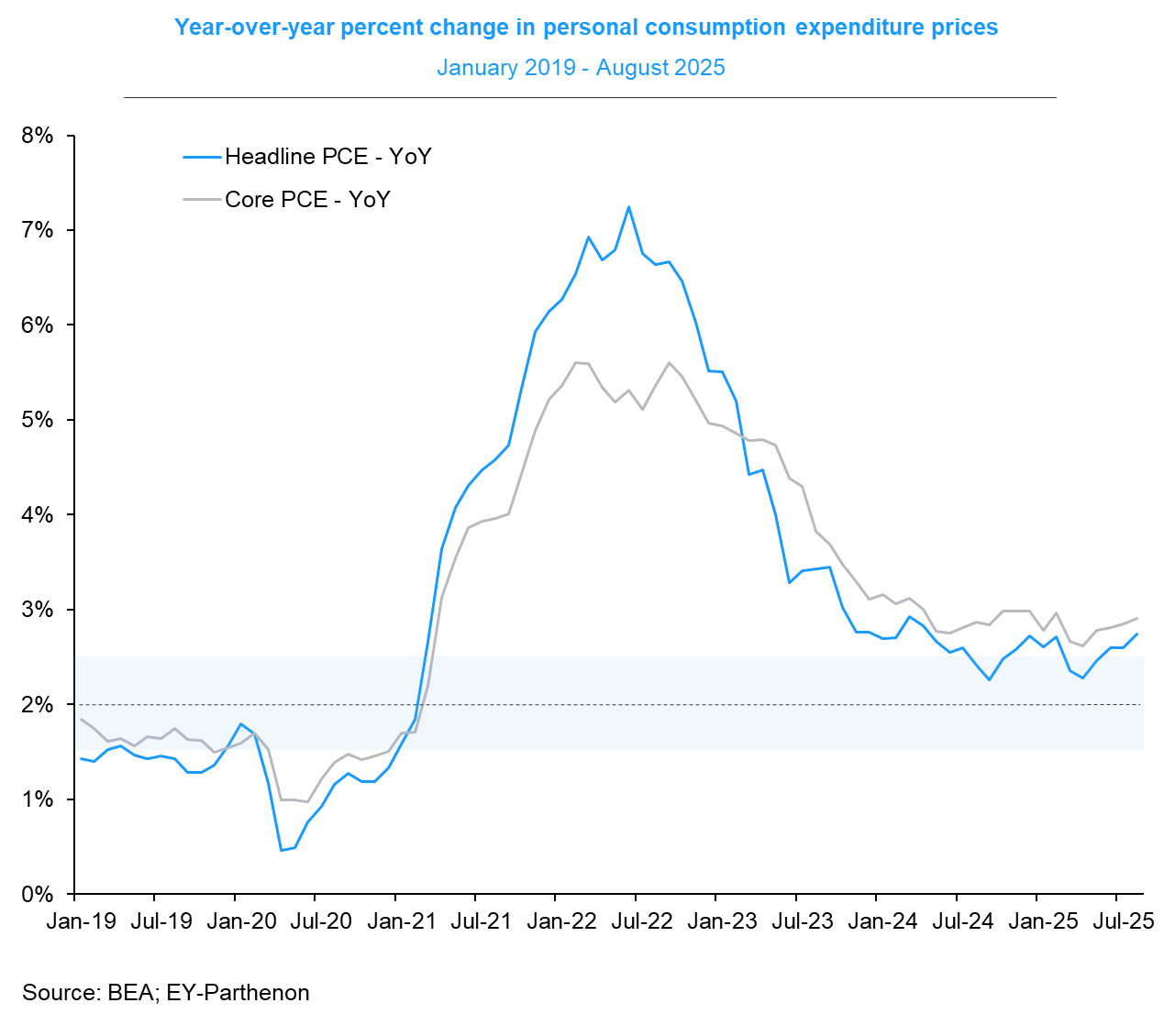
On a month-over-month basis, the core PCE price index was up 0.2%. If you annualize the six-month trend in the monthly figures — a reflection of the short-term trend in prices — the core PCE price index was up 3.0%.
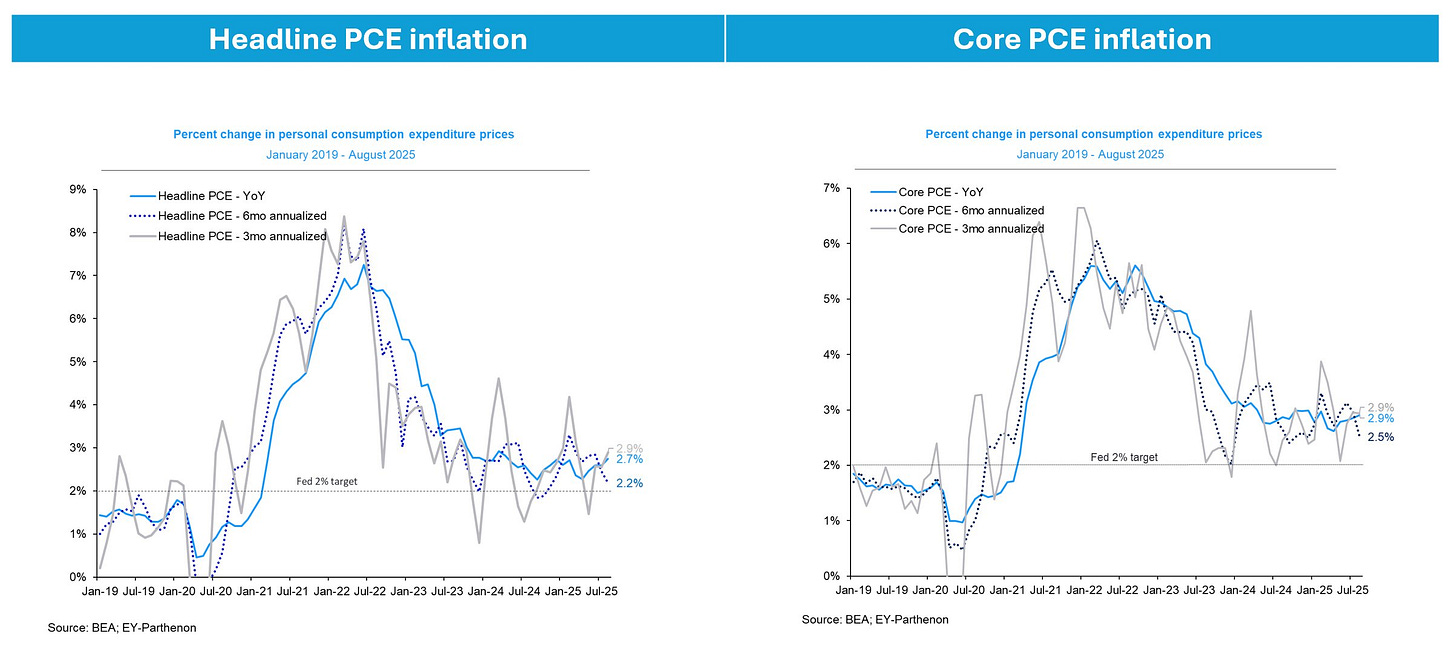
For more on inflation and the outlook for monetary policy, read: Fed Chair Powell: It’s a ‘challenging situation’ ⚖️ and The other side of the Fed’s inflation ‘mistake’ 🧐
🛍️ Consumer spending ticks higher. According to BEA data, personal consumption expenditures increased 0.3% month-over-month in August to a record annual rate of $21.11 trillion.

Adjusted for inflation, real personal consumption expenditures increased by 0.3%.

For more on consumer spending, read: We’re at an economic tipping point ⚖️ and Americans have money, and they’re spending it 🛍️
🏭 Business investment activity improves. Orders for nondefense capital goods excluding aircraft — a.k.a. core capex or business investment — increased 0.6% to $76.7 billion in August.
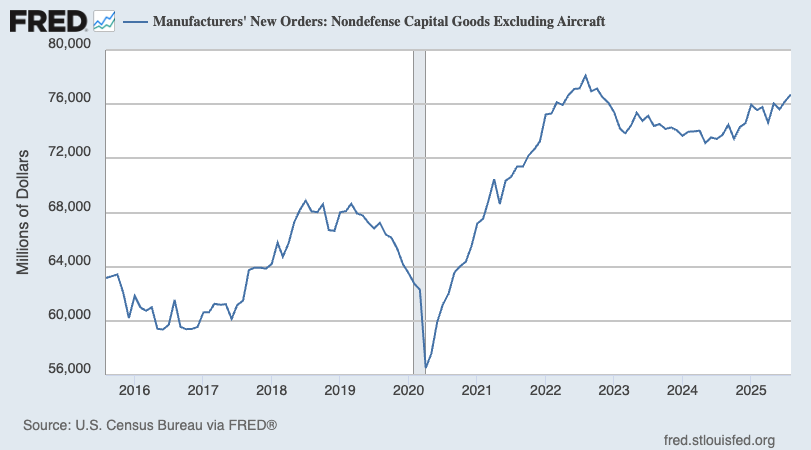
Core capex orders are a leading indicator, meaning they foretell economic activity down the road.
For more on the major macro metrics, read: We’re at an economic tipping point ⚖️
💼 New unemployment claims fall, total ongoing claims remain elevated. Initial claims for unemployment benefits declined to 218,000 during the week ending Sept. 20, down from 232,000 the week prior. This metric remains at levels historically associated with economic growth.

Insured unemployment, which captures those who continue to claim unemployment benefits, declined to 1.93 million during the week ending September 13. This metric is near its highest level since November 2021.
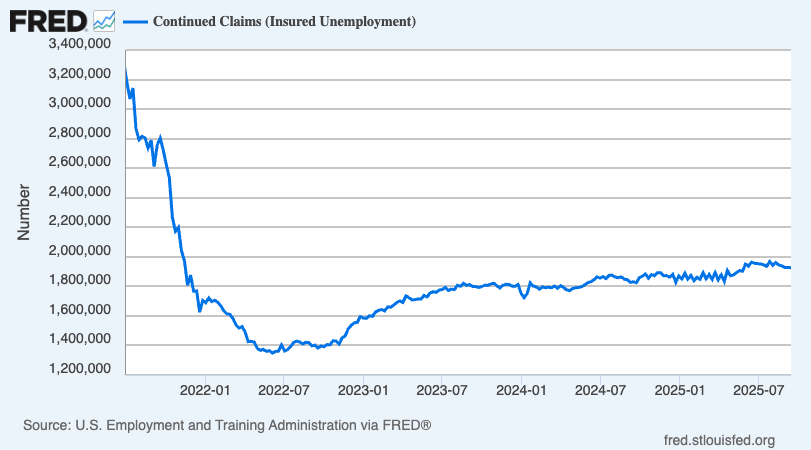
Low initial claims confirm that layoff activity remains low. Elevated continued claims confirm hiring activity is weakening. This dynamic warrants close attention, as it reflects a deteriorating labor market.
For more context, read: The hiring situation 🧩 and The labor market is cooling 💼
💳 Card spending data is holding up. From JPMorgan: “As of 16 Sep 2025, our Chase Consumer Card spending data (unadjusted) was 2.9% above the same day last year. Based on the Chase Consumer Card data through 16 Sep 2025, our estimate of the US Census September control measure of retail sales m/m is 0.17%.”
From BofA: “Total card spending per HH was up 1.8% y/y in the week ending Sep 20, according to BAC aggregated credit & debit card data. Y/y electronics spending soared in the week ending Sep 20 partly due to earlier iPhone launch this year (9/19/25 vs 9/20/24). However, total card spending ex electronics was up a still stable 1.6% y/y in the week ending Sep 20.”
For discussion on how sales may be inflated due to tariffs, read: A BIG economic question right now 🤔
⛽️ Gas prices decline. From AAA: “The national average for a gallon of regular dropped five cents since last week to $3.15. Fall is officially here, bringing lower gas prices and winter-blend gasoline which is cheaper to produce. Pacific Northwest drivers are getting some relief now that a pipeline issue has been resolved and pump prices are trending downward. The Atlantic hurricane season is halfway over, but the tropics remain a concern for the next two months if there’s storm activity in the Gulf that affects refineries in the area.”
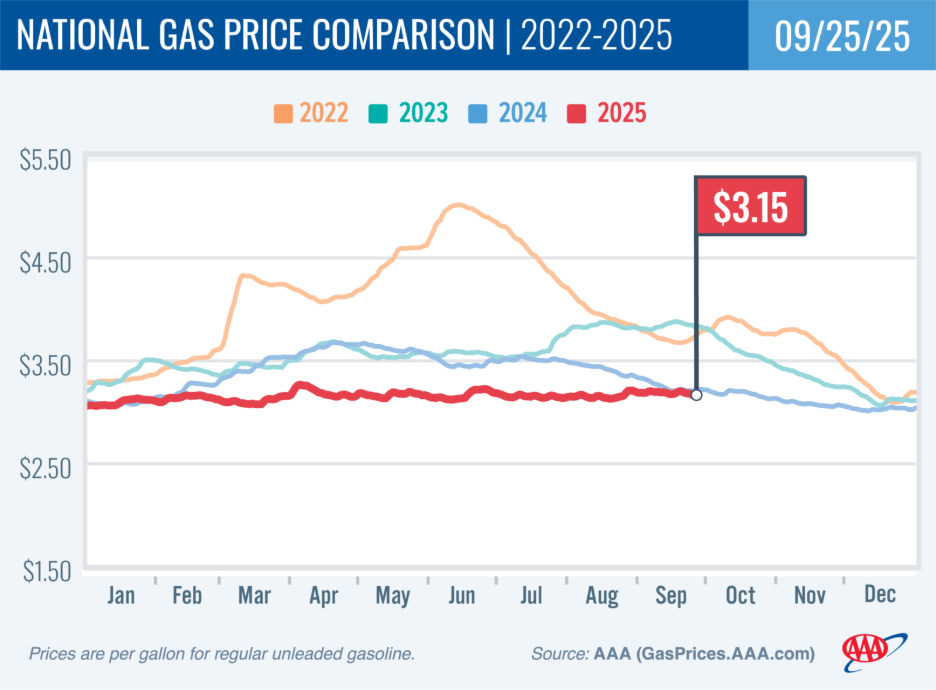
For more on energy prices, read: Higher oil prices meant something different in the past 🛢️
👎 Consumer confidence ticks lower. From the University of Michigan’s August Surveys of Consumers: “Although September’s decline was relatively modest, it was still seen across a broad swath of the population, across groups by age, income, and education, and all five index components. A key exception: sentiment for consumers with larger stock holdings held steady in September, while for those with smaller or no holdings, sentiment decreased.“
🏠 Mortgage rates tick higher. According to Freddie Mac, the average 30-year fixed-rate mortgage rose to 6.30%, up from 6.26% last week: “Following several weeks of decline, mortgage rates inched up this week. Housing market activity continues to hold up with purchase and refinance applications increasing by 18% and 42%, respectively, compared to the same time last year.”
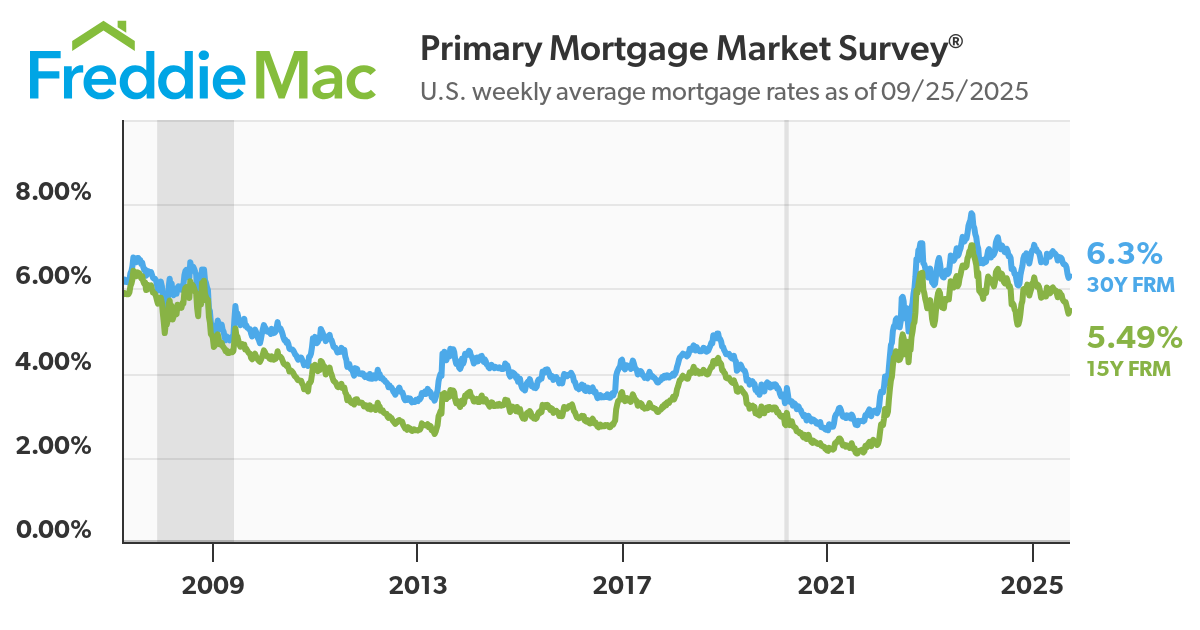
There are 147.9 million housing units in the U.S., of which 86.1 million are owner-occupied and about 39% are mortgage-free. Of those carrying mortgage debt, almost all have fixed-rate mortgages, and most of those mortgages have rates that were locked in before rates surged from 2021 lows. All of this is to say: Most homeowners are not particularly sensitive to the small weekly movements in home prices or mortgage rates.
For more on mortgages and home prices, read: Why home prices and rents are creating all sorts of confusion about inflation 😖
🏘️ Home sales tick lower. Sales of previously owned homes decreased by 0.2% in August to an annualized rate of 4.0 million units. From NAR chief economist Lawrence Yun: “Home sales have been sluggish over the past few years due to elevated mortgage rates and limited inventory. However, mortgage rates are declining and more inventory is coming to the market, which should boost sales in the coming months.”
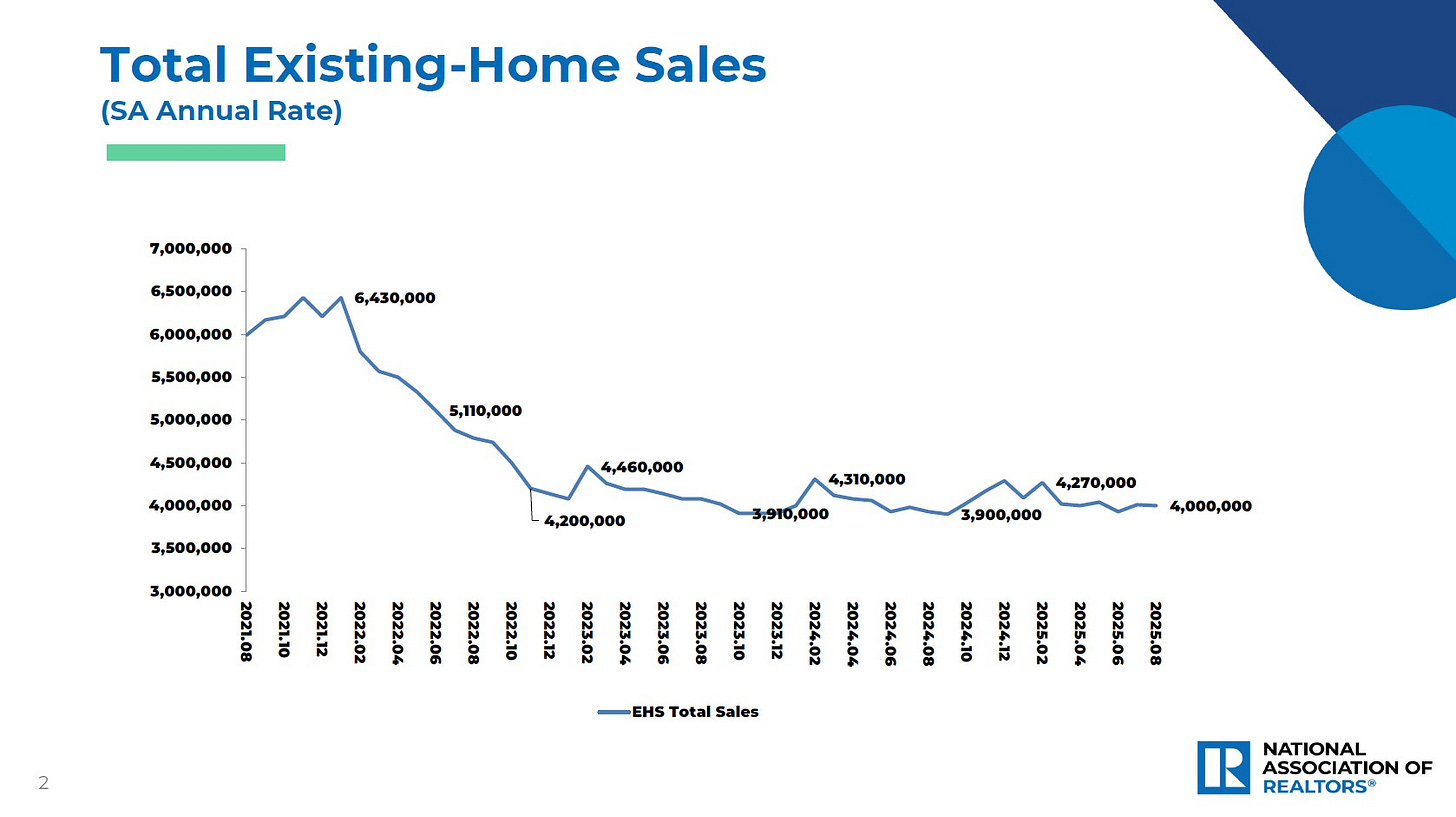
August’s prices for previously owned homes declined month over month, but rose year over year. From the NAR: “The median existing-home sales price for all housing types in August was $422,600, up 2.0% from one year ago ($414,200) – the 26th consecutive month of year-over-year price increases.”

From Yun: “Record-high housing wealth and a record-high stock market will help current homeowners trade up and benefit the upper end of the market. However, sales of affordable homes are constrained by the lack of inventory.”
For more on housing, read: The U.S. housing market has gone cold 🥶
🏘️ New home sales surge. Sales of newly built homes jumped 20.5% in August to an annualized rate of 800,000 units.

Wells Fargo economists cautioned against reading too much into the increase: “The surge reflects slightly lower mortgage rates and an increase in builders offering buyer incentives. Take the gain with a huge grain of salt. New home sales are prone to heavy revisions. A flat-ish trend in sales, similar to what has been evident all year, seems more likely.“
🏢 Offices remain relatively empty. From Kastle Systems: “Peak day office occupancy was 65.4% on Tuesday last week, up one tenth of a point from the previous week and a new single-day post-pandemic record high. Austin experienced the highest single-day occupancy of any tracked city since the pandemic on Wednesday, reaching 84.9%. The city also saw increases of more than two points on both Monday and Tuesday. Other significant increases on Tuesday included San Jose, up two and a half points to 62.6%, and Chicago, up nearly a full point to 73.2%. The average low was on Friday at 36.6%.”
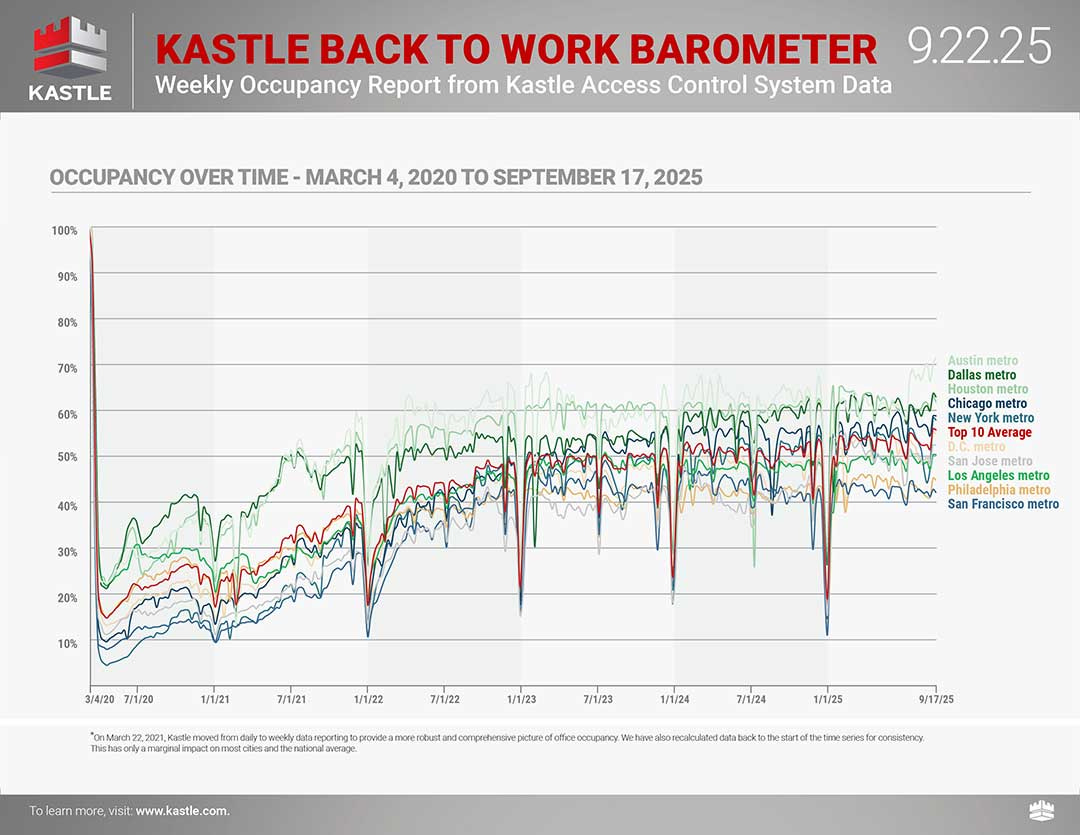
For more on office occupancy, read: This stat about offices reminds us things are far from normal 🏢
👎🤷 Activity survey signals cooler economic growth, lower inflation. From S&P Global’s September U.S. PMI: “[T]he monthly profile is one of growth having slowed from its recent peak back in July, and September saw companies also pull back on their hiring. Softening demand conditions are also becoming more widely reported, curbing pricing power. Although tariffs were again cited as a driver of higher input costs across both manufacturing and services, the number of companies able to hike selling prices to pass these costs on to customers has fallen, hinting at squeezed margins but boding well for inflation to moderate.”
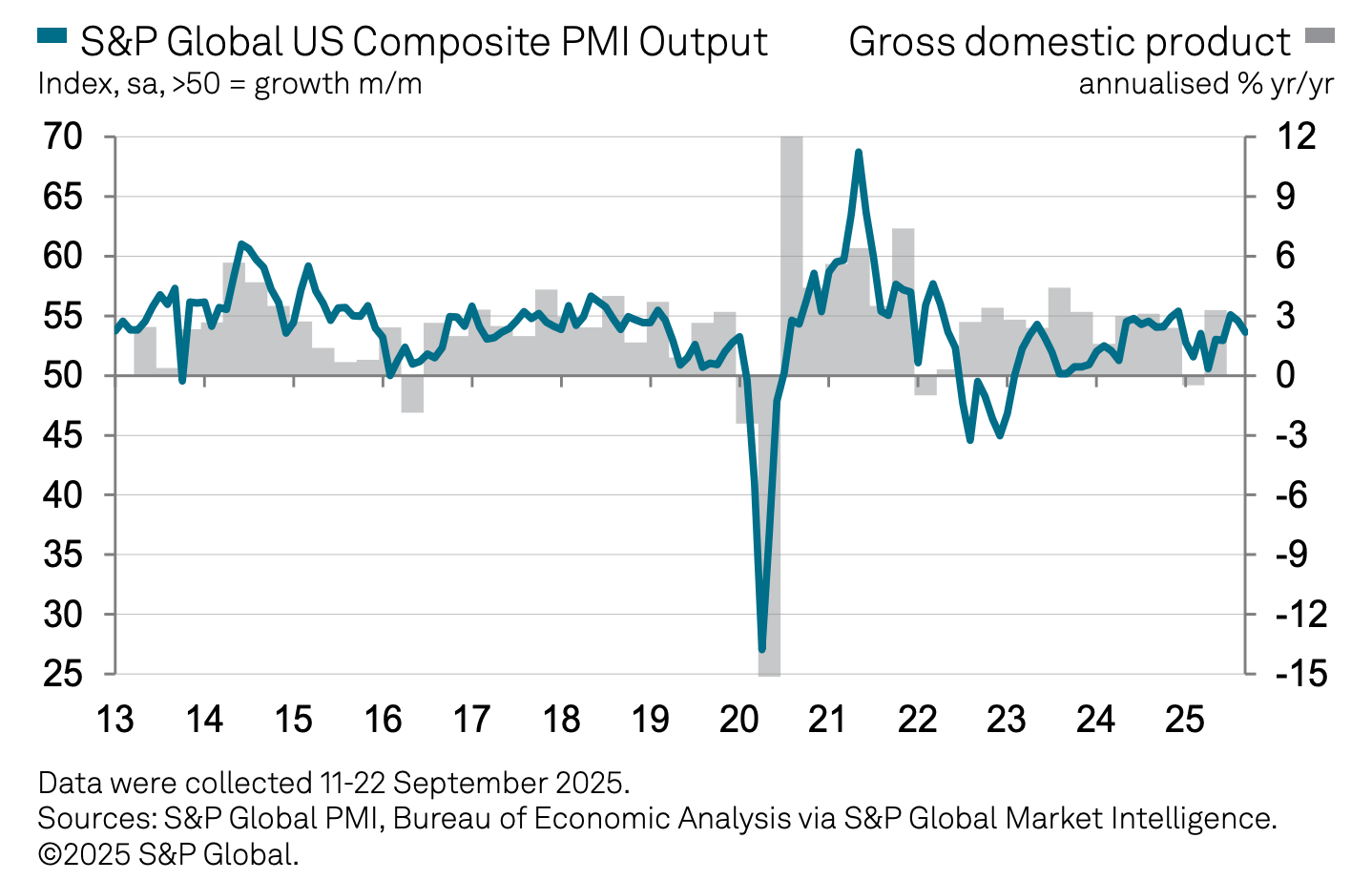
Keep in mind that during times of perceived stress, soft survey data tends to be more exaggerated than actual hard data.
For more on this, read: What businesses do > what businesses say 🙊
🇺🇸 Most U.S. states are still growing. From the Philly Fed’s August State Coincident Indexes report: “Over the past three months, the indexes increased in 44 states, decreased in five states, and remained stable in one, for a three-month diffusion index of 78. Additionally, in the past month, the indexes increased in 37 states, decreased in six states, and remained stable in seven, for a one-month diffusion index of 62.”
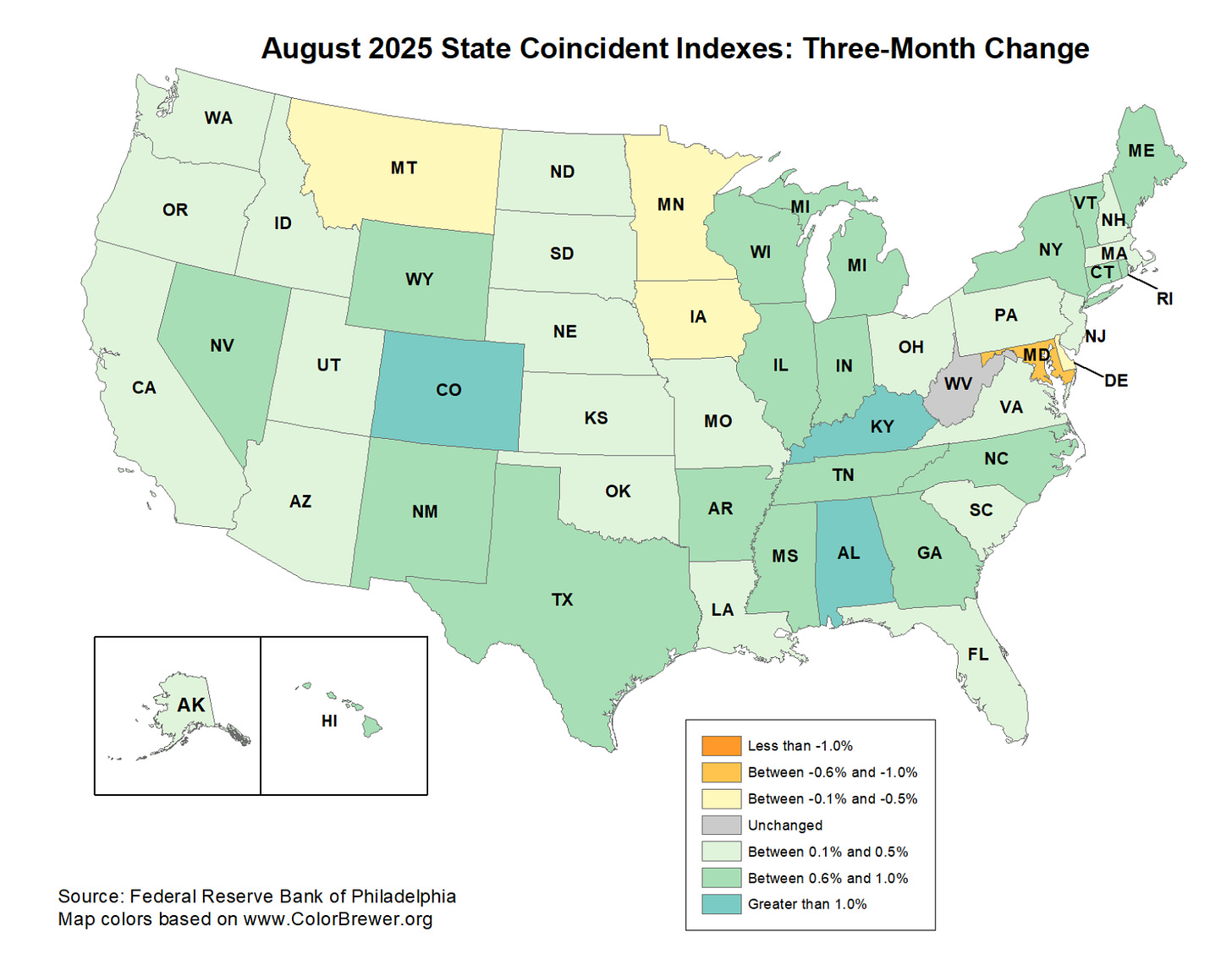
📈 Near-term GDP growth estimates are tracking positively. The Atlanta Fed’s GDPNow model sees real GDP growth rising at a 3.9% rate in Q3.
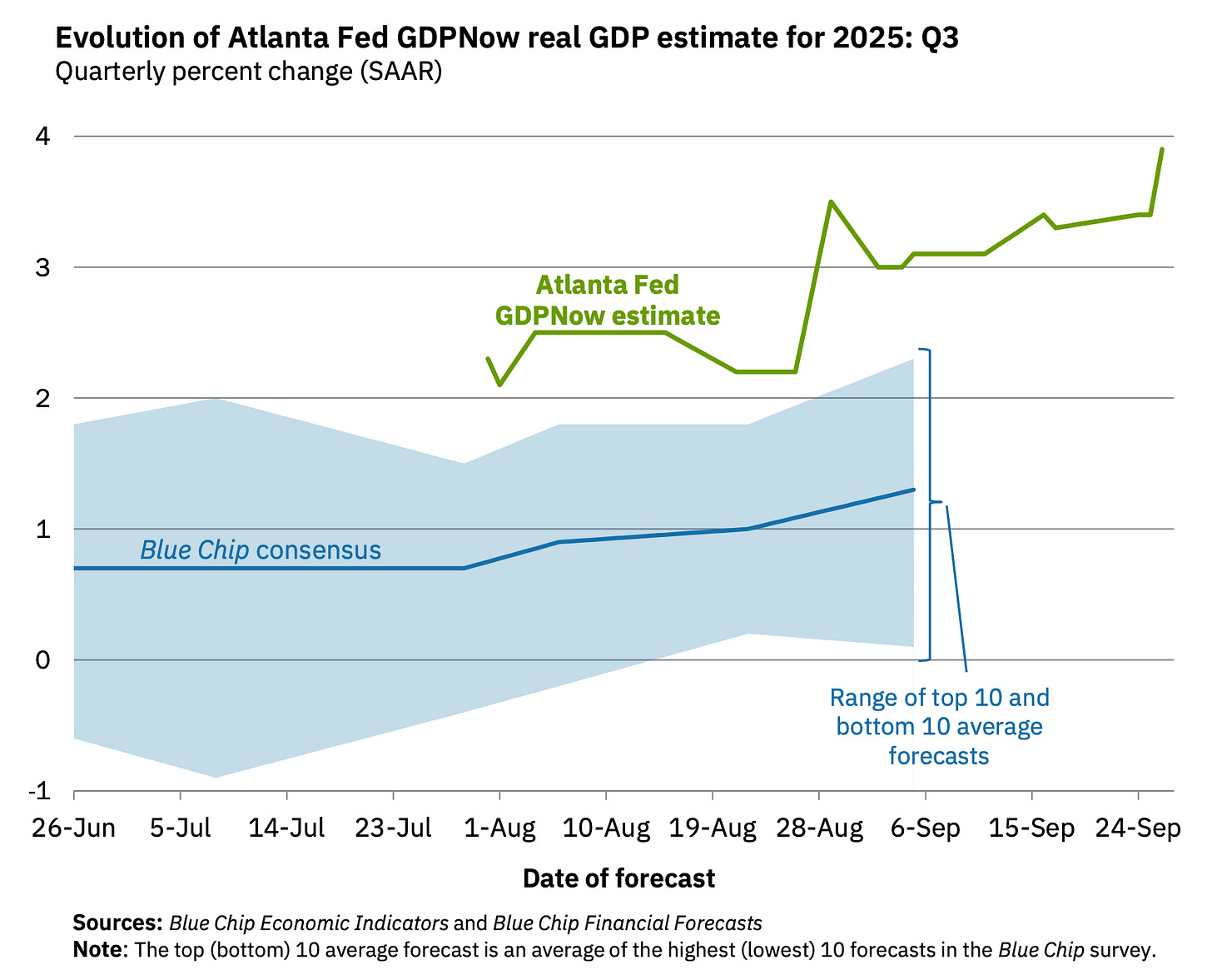
For more on GDP and the economy, read: 9 once-hot economic charts that cooled 📉 and We're at an economic tipping point ⚖️
Putting it all together 📋
🚨 The Trump administration’s pursuit of tariffs is disrupting global trade, with significant implications for the U.S. economy, corporate earnings, and the stock market. Until we get more clarity, here’s where things stand:
Earnings look bullish: The long-term outlook for the stock market remains favorable, bolstered by expectations for years of earnings growth. And earnings are the most important driver of stock prices.
Demand is positive: Demand for goods and services remains positive, supported by healthy consumer and business balance sheets. Job creation, although cooling, also remains positive, and the Federal Reserve — having resolved the inflation crisis — shifted its focus toward supporting the labor market.
But growth is cooling: While the economy remains healthy, growth has normalized from much hotter levels earlier in the cycle. The economy is less “coiled” these days as major tailwinds like excess job openings and core capex orders have faded. It has become harder to argue that growth is destiny.
Actions speak louder than words: We are in an odd period, given that the hard economic data decoupled from the soft sentiment-oriented data. Consumer and business sentiment has been relatively poor, even as tangible consumer and business activity continues to grow and trend at record levels. From an investor’s perspective, what matters is that the hard economic data continues to hold up.
Stocks are not the economy: There’s a case to be made that the U.S. stock market could outperform the U.S. economy in the near term, thanks largely to positive operating leverage. Since the pandemic, companies have aggressively adjusted their cost structures. This came with strategic layoffs and investment in new equipment, including hardware powered by AI. These moves are resulting in positive operating leverage, which means a modest amount of sales growth — in the cooling economy — is translating to robust earnings growth.
Mind the ever-present risks: Of course, we should not get complacent. There will always be risks to worry about, such as U.S. political uncertainty, geopolitical turmoil, energy price volatility, and cyber attacks. There are also the dreaded unknowns. Any of these risks can flare up and spark short-term volatility in the markets.
Investing is never a smooth ride: There’s also the harsh reality that economic recessions and bear markets are developments that all long-term investors should expect as they build wealth in the markets. Always keep your stock market seat belts fastened.
Think long-term: For now, there’s no reason to believe there’ll be a challenge that the economy and the markets won’t be able to overcome over time. The long game remains undefeated, and it’s a streak that long-term investors can expect to continue.
For more on how the macro story is evolving, check out the previous review of the macro crosscurrents. »
Key insights about the stock market 📈
Here’s a roundup of some of TKer’s most talked-about paid and free newsletters about the stock market. All of the headlines are hyperlinked to the archived pieces.
10 truths about the stock market 📈
The stock market can be an intimidating place: It’s real money on the line, there’s an overwhelming amount of information, and people have lost fortunes in it very quickly. But it’s also a place where thoughtful investors have long accumulated a lot of wealth. The primary difference between those two outlooks is related to misconceptions about the stock market that can lead people to make poor investment decisions.
The makeup of the S&P 500 is constantly changing 🔀
Passive investing is a concept usually associated with buying and holding a fund that tracks an index. And no passive investment strategy has attracted as much attention as buying an S&P 500 index fund. However, the S&P 500 — an index of 500 of the largest U.S. companies — is anything but a static set of 500 stocks.

The key driver of stock prices: Earnings💰
For investors, anything you can ever learn about a company matters only if it also tells you something about earnings. That’s because long-term moves in a stock can ultimately be explained by the underlying company’s earnings, expectations for earnings, and uncertainty about those expectations for earnings. Over time, the relationship between stock prices and earnings has a very tight statistical relationship.
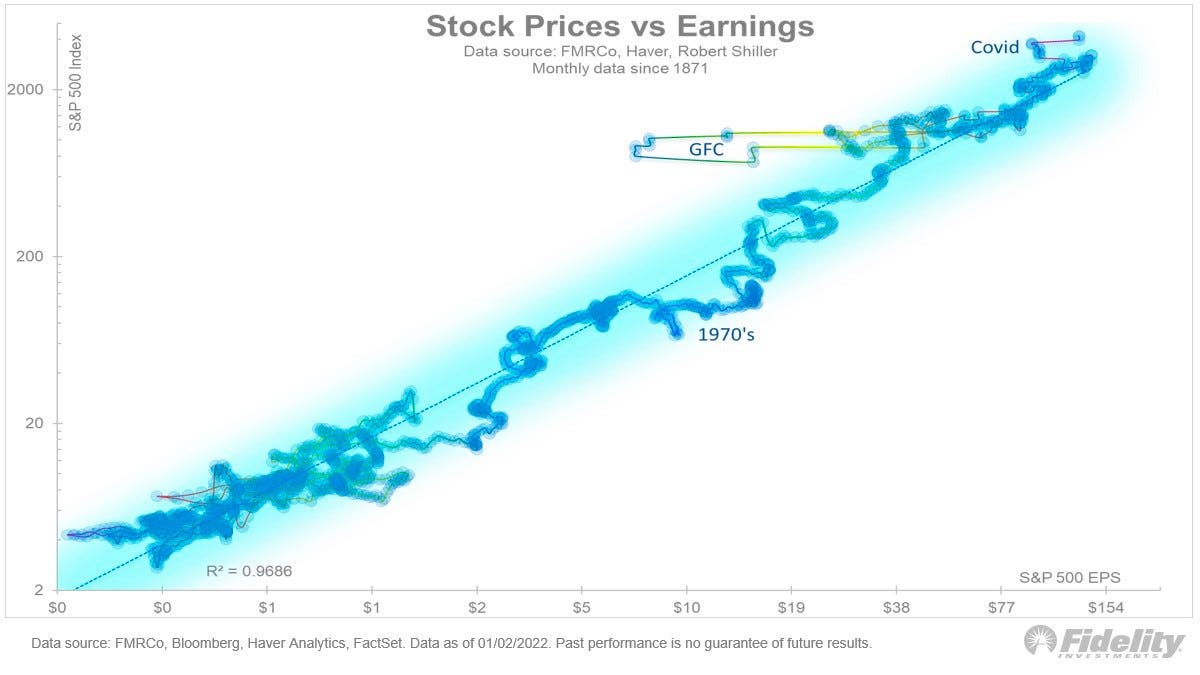
Stomach-churning stock market sell-offs are normal🎢
Investors should always be mentally prepared for some big sell-offs in the stock market. It’s part of the deal when you invest in an asset class that is sensitive to the constant flow of good and bad news. Since 1950, the S&P 500 has seen an average annual max drawdown (i.e., the biggest intra-year sell-off) of 14%.
How the stock market performed around recessions 📉📈
Every recession in history was different. And the range of stock performance around them varied greatly. There are two things worth noting. First, recessions have always been accompanied by a significant drawdown in stock prices. Second, the stock market bottomed and inflected upward long before recessions ended.

In the stock market, time pays ⏳
Since 1928, the S&P 500 generated a positive total return more than 89% of the time over all five-year periods. Those are pretty good odds. When you extend the timeframe to 20 years, you’ll see that there’s never been a period where the S&P 500 didn’t generate a positive return.

What a strong dollar means for stocks 👑
While a strong dollar may be great news for Americans vacationing abroad and U.S. businesses importing goods from overseas, it’s a headwind for multinational U.S.-based corporations doing business in non-U.S. markets.

Economy ≠ Stock Market 🤷♂️
The stock market sorta reflects the economy. But also, not really. The S&P 500 is more about the manufacture and sale of goods. U.S. GDP is more about providing services.
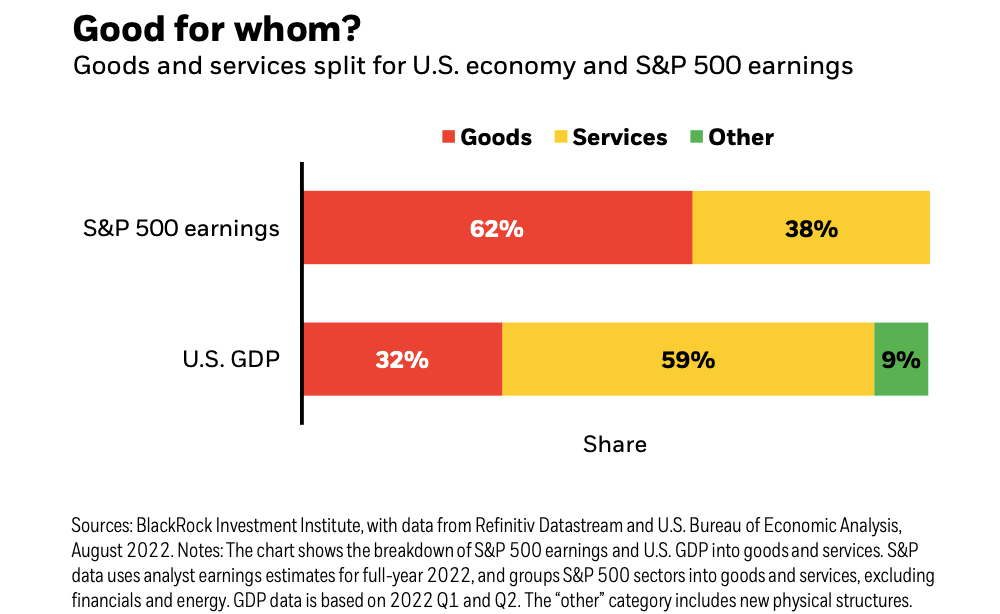
Stanley Druckenmiller's No. 1 piece of advice for novice investors 🧐
…you don't want to buy them when earnings are great, because what are they doing when their earnings are great? They go out and expand capacity. Three or four years later, there's overcapacity and they're losing money. What about when they're losing money? Well, then they’ve stopped building capacity. So three or four years later, capacity will have shrunk and their profit margins will be way up. So, you always have to sort of imagine the world the way it's going to be in 18 to 24 months as opposed to now. If you buy it now, you're buying into every single fad every single moment. Whereas if you envision the future, you're trying to imagine how that might be reflected differently in security prices.
Peter Lynch made a remarkably prescient market observation in 1994 🎯
Some event will come out of left field, and the market will go down, or the market will go up. Volatility will occur. Markets will continue to have these ups and downs. … Basic corporate profits have grown about 8% a year historically. So, corporate profits double about every nine years. The stock market ought to double about every nine years… The next 500 points, the next 600 points — I don’t know which way they’ll go… They’ll double again in eight or nine years after that. Because profits go up 8% a year, and stocks will follow. That's all there is to it.
Warren Buffett's 'fourth law of motion' 📉
Long ago, Sir Isaac Newton gave us three laws of motion, which were the work of genius. But Sir Isaac’s talents didn’t extend to investing: He lost a bundle in the South Sea Bubble, explaining later, “I can calculate the movement of the stars, but not the madness of men.” If he had not been traumatized by this loss, Sir Isaac might well have gone on to discover the Fourth Law of Motion: For investors as a whole, returns decrease as motion increases.
Most pros can’t beat the market 🥊
According to S&P Dow Jones Indices (SPDJI), 65% of U.S. large-cap equity fund managers underperformed the S&P 500 in 2024. As you stretch the time horizon, the numbers get even more dismal. Over a three-year period, 85% underperformed. Over a 10-year period, 90% underperformed. And over a 20-year period, 92% underperformed. This 2023 performance follows 14 consecutive years in which the majority of fund managers in this category have lagged the index.

Proof that 'past performance is no guarantee of future results' 📊
Even if you are a fund manager who generated industry-leading returns in one year, history says it’s an almost insurmountable task to stay on top consistently in subsequent years. According to S&P Dow Jones Indices, just 4.21% of all U.S. equity funds in the top half of performance during the first year were able to remain in the top during the four subsequent years. Only 2.42% of U.S. large-cap funds remained in the top half
SPDJI’s report also considered fund performance relative to their benchmarks over the past three years. Of 738 U.S. large-cap equity funds tracked by SPDJI, 50.68% beat the S&P 500 in 2022. Just 5.08% beat the S&P in the two years ending 2023. And only 2.14% of the funds beat the index over the three years ending in 2024.

The odds are stacked against stock pickers 🎲
Picking stocks in an attempt to beat market averages is an incredibly challenging and sometimes money-losing effort. Most professional stock pickers aren’t able to do this consistently. One of the reasons for this is that most stocks don’t deliver above-average returns. According to S&P Dow Jones Indices, only 24% of the stocks in the S&P 500 outperformed the average stock’s return from 2000 to 2022. Over this period, the average return on an S&P 500 stock was 390%, while the median stock rose by just 93%.



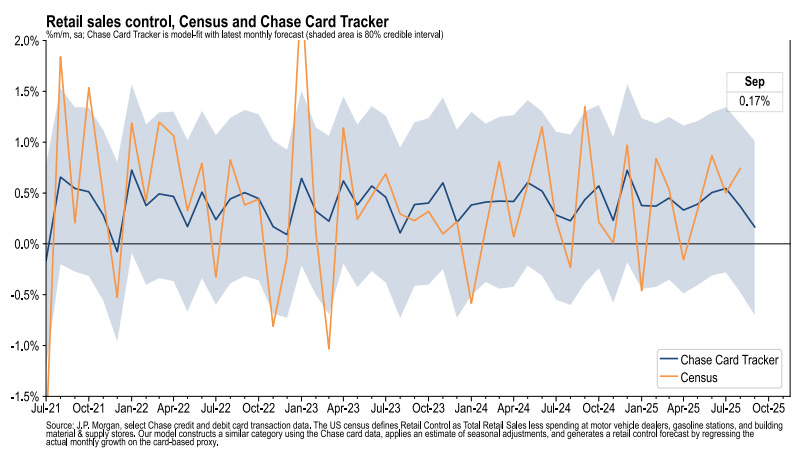
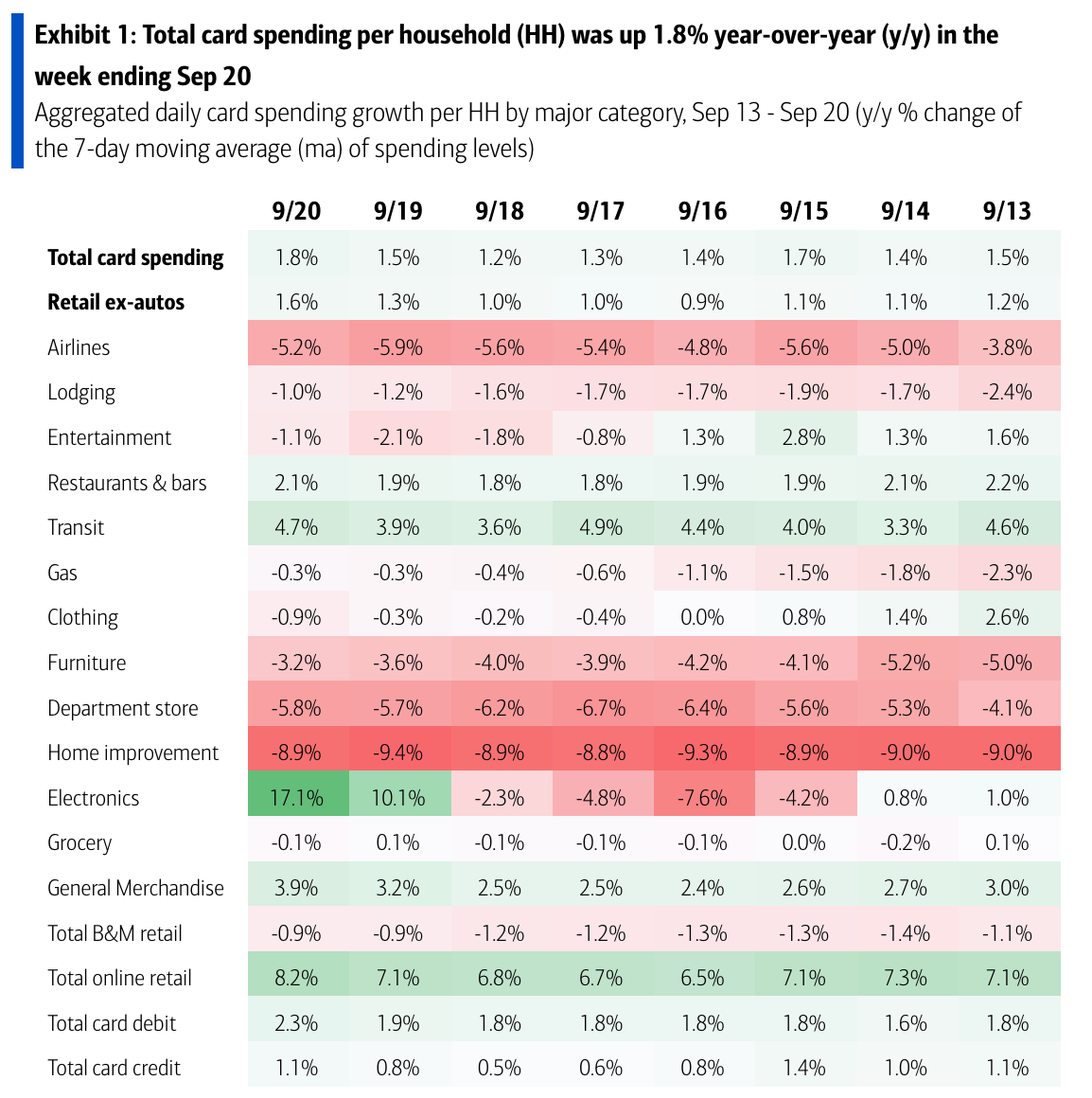
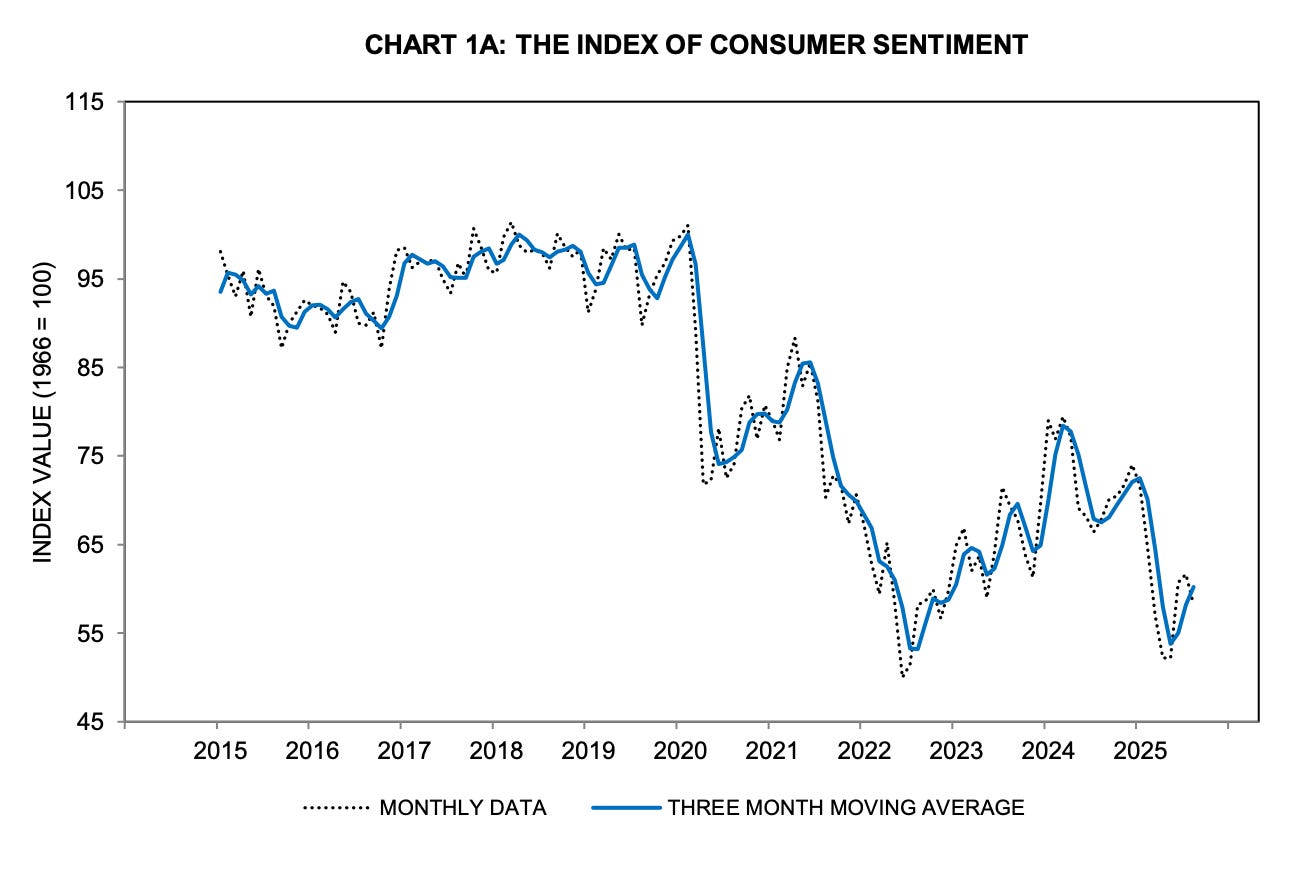

The forward realized CAPE, wow, just blew my mind! What a great chart.